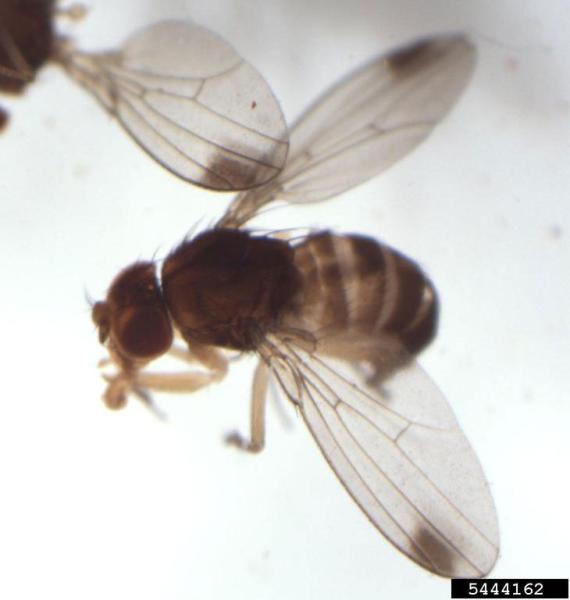Drosophila suzukii (Matsumura, 1931) (CABI)
Spotted wing drosophila, cherry vinegar fly
Presumed to be Asia (Adrion et al. 2014)
Hawaii in 1980s; continental U.S. in 2008 (Asplen et al. 2015)
Possibly in fruits imported from Asia (Rota-Stabelli et al. 2013)
Pest of unripe berries and stone fruits capable of causing significant economic losses (Asplen et al. 2015)

Spotted wing drosophila, adult male
Photo by Hannah Burrack; North Carolina State University
Find more images
Spotlights
Distribution / Maps / Survey Status
Videos
All Resources
Selected Resources
The section below contains highly relevant resources for this species, organized by source.
Council or Task Force
Partnership
International Government
State and Local Government
Academic
Adrion, J.R., A. Kousathanas M. Pascual, et al. 2014. Drosophila suzukii: The genetic footprint of a recent, worldwide invasion. Molecular Biology and Evolution 31(12):3148-3163.
Asplen, M.K., G. Anfora, A. Biondi, et al. 2015. Invasion biology of spotted wing Drosophila (Drosophila suzukii): a global perspective and future priorities. Journal of Pest Science 88(3):469-494.
CABI. Invasive Species Compendium. Drosophila suzukii. CAB International. [Accessed Sep 25, 2023].
Rota-Stabelli,O., M. Blaxter, and G. Anfora. 2013. Drosophila suzukii. Current Biology 23(1):R8-R9.
 An official website of the United States government.
An official website of the United States government.